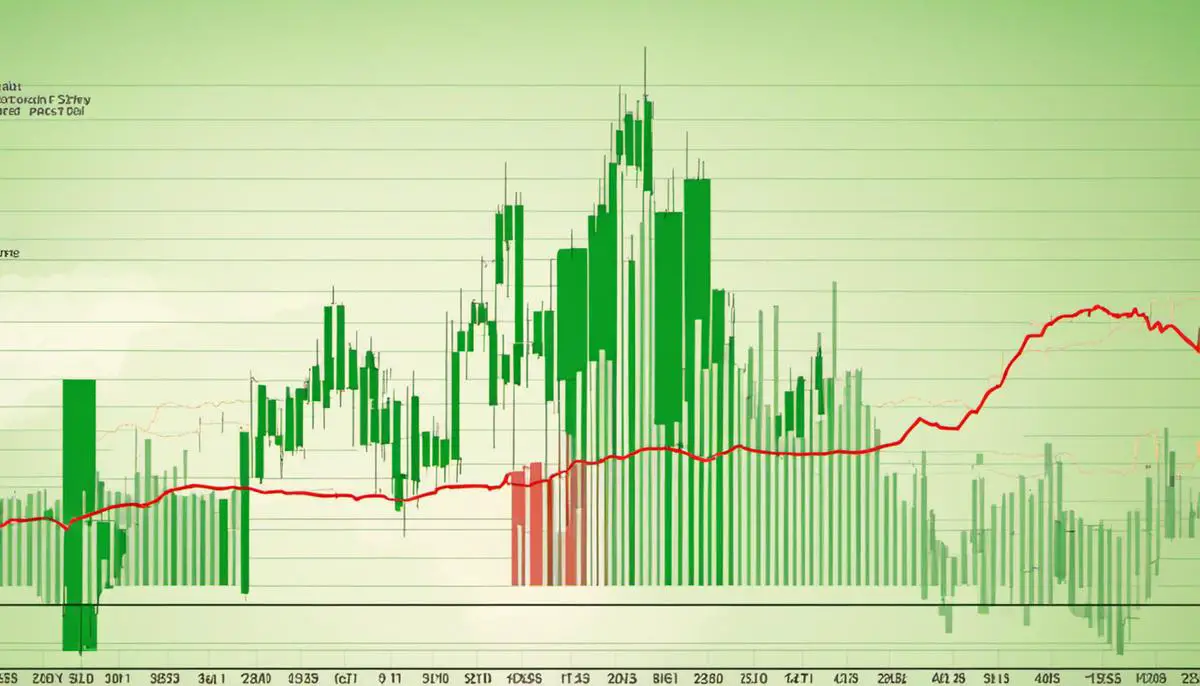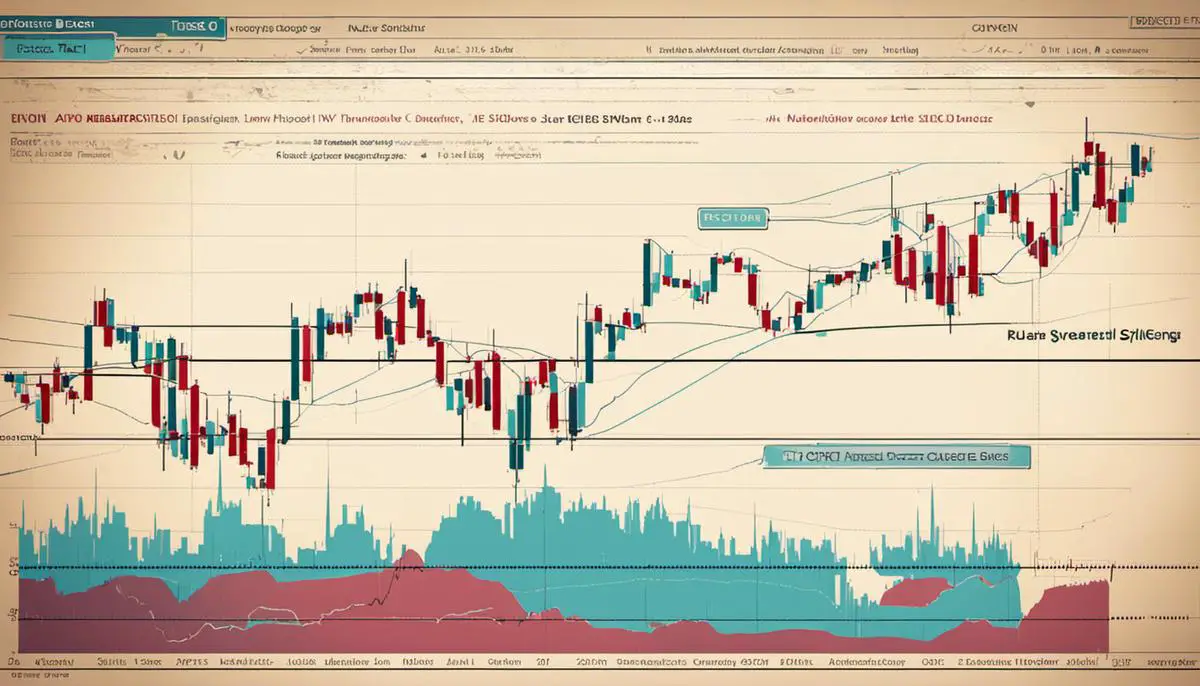As the landscape of financial markets undergoes constant evolution, adopting algorithmic trading has become an inevitable part of this change. Known commonly as ‘algo trading’, this practice incorporates intricate algorithms, enabling swift and autonomous trading operations. This complements the compelling need of the hour for quick decision making and action. This study primarily delves into the intricacies of algorithmic trading, its theoretical principles, and their practical implications. Furthermore, the study provides an in-depth insight into Python, a leading language significantly employed in algo trading, exploring its relevant data processing libraries. In addition, the study ventures into the step-by-step building of efficient trading algorithms, their backtesting, and risk management strategies. Finally, it also aims at examining the current trends and future prospects of algorithmic trading, placing emphasis on the role of Python.
Foundation of Algorithmic Trading
The Fundamental Concepts and Principles Underpinning Algorithmic Trading
Algorithmic trading, also known as automated trading, high-frequency trading, or system trading, employs pre-programmed instructions to execute trading activity. This approach, primarily used in financial markets, notably optimises speed, precision and reduced costs compared to human traders. Yet, it also enables strategy backtesting, reduces the risk of manual errors and prevents psychological trading decisions.
The efficacy of algorithmic trading derives from its foundation on principled and fully-evolved concepts spanning mathematics, economics, computer science, and financial markets. Comprehending these critical principles broadens understanding of and bolsters competency in implementing algorithmic trading strategies.
- Financial Markets Understanding: Familiarity with market structures, trading mechanisms, and financial instruments paves the way for developing robust trading algorithms. A vast array of instruments including shares, derivatives, cryptos, and forex can be algorithmically traded. Knowledge of market microstructure, order types, and trading protocols is indispensable.
- Mathematical Models: Quantitative financial modelling forms the backbone of algorithmic trading. Mathematical models translate investment philosophies into predetermined rules, exploiting market inefficiencies.
- High-Frequency Data Analysis: Effective algorithmic trading necessitates a seamless grasp of data analysis, given the volume of data acting as the fuel for algorithmic decisions. Proficient statistical and probability analysis provides insights into patterns and trends.
- Risk Management: Constructing risk management modules in an algorithmic trading setup is paramount. Such modules account for the volatility and liquidity of the traded instrument and set limits on potential losses.
- Programming Skills: Algorithms are crafted in code. Hence, a substantial foundation in programming languages like Python, Java or C++ is a cardinal requirement.
- Backtesting: An algorithm’s performance, pre and post-deployment, is gauged through backtesting, which aids in fine-tuning the algorithm based on historical data.
- Performance Measurement: Key metrics on drawdowns, Sharpe ratio, and percentage returns measure an algorithm’s performance. These metrics highlight strengths, uncover weaknesses, monitor progress and create accountability.
Algorithmic trading is no magical tool that guarantees financial success; it reflects the melding of financial expertise, rigorous mathematical modelling, superior programming skills, and precise execution. A fortuitous algorithmic trader is a meticulous learner, an astute observer, and an incessant innovator, with an unwavering commitment to diligence and consistency, to carve a lucrative path in the intricate labyrinth of financial markets. Each algorithmic-action, seized or squandered, is an opportunity to learn, refine and advance towards financial acumen.
So, with every tick of the market, may the quest for algorithmic trading wisdom never cease. Dive into the glorious matrix of numbers, symbols and graphs- let intellect shape strategies, let diligence drive performance, and let technology conquer the financial realm.

Python in Algorithmic Trading
Title: Python: The Epicentre of Algorithmic Trading
In the esoteric realm of algorithmic trading, the use of Python as the programming language of choice has grown significantly over recent years. Pitted against the likes of C++, R and Java, Python’s ascension to the throne isn’t a mere coincidence but a holistic encapsulation of usability, efficiency and performance, all consolidating its position as the ideal choice for algorithmic trading.
A multifarious combination of factors bolsters Python’s place in this industry. Principal among these is its simplicity and readability. Python boasts a remarkably user-friendly syntax that mimics natural language, reducing the effort required to translate complex mathematical models into implementable algorithms. Resolutely focused on user experience and productivity, it significantly contracts the learning curve, encouraging more individuals to delve into the world of quant trading.
Python’s library ecosystem is also an area of unparalleled strength. Renowned libraries like NumPy, SciPy, and pandas offer comprehensive tools for numerical and scientific computing, significantly slashing the time required for data analysis and strategy development. Simultaneously, libraries like Matplotlib and Seaborn make data visualisation a breeze, simplifying the process of interpreting and communicating intricate data patterns. Notably, the package pyalgotrade enables backtesting of trading strategies and implements popular performance measurement metrics in a remarkably intuitive manner.
One must not fail to acknowledge the contribution of Python’s community, which consists of researchers, data analysts, mathematicians, computer scientists, and hobbyists. This diverse collective frequently contributes to refining and expanding Python’s library ecosystem while offering valuable assistance and resources for novices and veterans alike. This unceasing evolution ensures that Python remains in stride with the latest advancements in technology and finance, keeping it a step ahead in the dynamic domain of algorithmic trading.
Python’s cross-platform nature ensures compatibility across varied operating systems, improving operational efficiency. Additionally, its ability to seamlessly integrate with other languages and technologies – such as C/C++, Java, or .NET – expands its utility in hybrid programming environments, improving computational performance where required.
Further enhancing its suitability, Python provides access to numerous Application Programming Interfaces (APIs) for online trading platforms, facilitating smooth algorithmic trade execution in real time. These APIs confer the ability to access live feed, place trade orders, implement stop losses, and retrieve historical data, forming the backbone of algorithmic trading operations.
So while the initial allure of Python may be attributed to its simple syntax and positive learning gradient, its dominance in the field of algorithmic trading is a testament to its end-to-end capabilities. From backtesting and performance measurement to live trading, Python’s comprehensiveness ensures it remains an unmatched tool in the quant trader’s arsenal. In combining mathematical adeptness with programming prowess and financial acumen, Python provides a sure footing on the treacherous terrain of financial markets, making it not only a suitable, but an indispensable companion in the pursuit of algorithmic trading.

Building Trading Algorithms
Building trading algorithms in Python, a procedural discipline that presents both challenges and opportunities, calls for a definitive process that segregates concept development, logical definition, code writing, and system integration. While the qualities of Python have been examined before, the focal aim here is the exact articulation of the steps that shape the programming journey within Python for algorithmic trading.
The journey begins with the formation of a crystal-clear conceptual foundation. An imperative process, this entails determining the strategic basis of the algorithm, including the targeted asset class, trading frequency, and market conditions. Python’s pandas library, offering comprehensive data structures like DataFrame and Series, proves crucial for storing and manipulating this high-dimensional strategic data.
Once the strategy is firmly anchored, the algorithm’s logical structure requires careful attention. This period involves defining trading conditions, setting execution tactics, and detailing risk management parameters. NumPy’s array-oriented computing offers a valuable tool in this phase, enabling efficient logical crunching. Meanwhile, the SciPy library, particularly its statistical functions, can be incorporated to verify statistical significance and evaluate trading hypothesis validity.
Post-logical definition, the critical step of writing the Python code for the trading algorithm is undertaken. Herein, Python’s brevity and readability play a paramount role in creating an efficient, clear, and manageable algorithm. Moreover, pyalgotrade, an algorithmic trading library, enables an event-driven architecture for backtesting, the support of multiple data feeds, and the ease of strategy implementation.
Ensuring the written code aligns perfectly with the logic defined previously is also paramount. The unit testing mechanisms within Python’s standard library help guarantee this alignment and, thereby, minimize the risks attached to incorrect programming.
The successful completion of code writing moves the journey onto the system integration phase. Seek a Python environment that is proficient in connecting the algorithm with trading platforms. It unveils the opportunity to trial the algorithm in a simulated trading environment before progressing to live trading. Here too, Python shines, offering an array of APIs for online trading platforms, hence facilitating seamless system integration for algorithm execution in real time.
Lastly, while it is not a phase per se, continuous monitoring of algorithm performance cannot be understated. Libraries like Matplotlib and Seaborn lend to the effective tracking and visualization of system performance, ensuring that the algorithm does not fall prey to changing market dynamics and continues to perform at its best.
As a closing remark, it’s crucial to note that the outlined process is a simplification of a complex, multi-dimensional task. Although Python facilitates this process, the human mind crafting the algorithms is the defining determinant in extracting the maximum benefits from algorithmic trading. Understanding the technical necessities and continuously adapting to the evolving financial world remains central to ensuring algorithmic trading success.

Backtesting and Risk Management
Algorithmic trading, from conception to execution, is a systematic and analytical approach to trading. Further delving into algorithmic trading’s intricacies will consolidate the importance of backtesting and fine-tune the significance of risk management further.
Backtesting, in the context of algorithmic trading, refers to the process of running a strategy or model using historical data to ascertain its viability before risking any actual capital. Algorithms are tested over a lengthy period and diversified market conditions to capture different areas of risk and potential profitability. An important aspect that must be recognised is that, while backtesting provides a useful heuristic, it does not guarantee future performance. This discrepancy between past and future performance is attributed to concept drift – the commotion-like behaviour of financial markets that frequently break patterns and correlation.
Incorporating a backtesting framework that is both robust and realistic is crucial. Python’s library ecosystem comprises libraries like zipline and catalyst that facilitate backtesting of trading strategies. They simulate real trading conditions closely, offering portfolio management and even risk assessment features. Backtesting that inaccurately simulates market dynamics can lead to strategy overfitting or underfitting, thereby paradoxically increasing risk.
Predicting the future and making lucrative trades via an algorithm is a fascinating but challenging endeavour. Therefore, beyond the algorithm’s proficiencies, there are other factors, primarily those unforeseen and unpredictable, to counterbalance. Herein is where risk management in algorithmic trading underpins its core importance.
Risk management, essentially, is to avoid catastrophic losses while maximising returns. Mechanisms designed to do this evaluate the trade’s risk before execution and accordingly adjust the algorithm parameters. Volatility assessment, position size adjustment, and stop-loss orders serve as the fundamental mechanisms towards a sound risk management strategy.
A well-defined risk management process can help understand the maximal potential downside and establish prudent safety margins. Metrics such as Value at Risk (VaR) and Expected Shortfall (ES) provide a valuable frame of reference, quantifying potential loss and risk involved within a specific timeframe.
One fascinating contingency of risk management is the Monte Carlo simulation. Using random sampling techniques, it generates several plausible outcomes to give a comprehensive understanding of the risks involved. Comprehensively, risk management assimilates rigid disciplines that, if not adhered, could lead to the algorithm’s failure, despite a robust backtesting environment.
The unpredictable nature of financial markets and inherent risk along with the temporal distinction between backtested results and future results manifest the accomplishments of algorithmic trading. It compels a reassessment of the notion that algorithmic trading is resolutely a scientific process. It is a fine fusion of science and art. The scientific part encapsulates systematic backtesting and risk management, and the art resides in recognising the evolutionary nature of algorithmic trading and adapting to ever-changing financial landscapes.
In conclusion, backtesting is the backbone of validating investment strategies in algorithmic trading, and risk management is the ridge that defends against potential catastrophic loss. The intertwining of these two facets of algorithmic trading consolidates its competency and robustness, founded on rigorous scientific claims mixed with artistic adaptability. Being able to adapt to new data and variables keeps the trading algorithm vibrant, while managing risks saves from colossal pitfalls. It is an exciting era, as the emergence and evolution of algorithmic trading continues to redefine the financial landscape.

Future of Algo Trading

Algorithmic Trading has carved itself as a transformative force in the financial markets, offering tantalising prospects for the future. This exploration covered the vast realm of algo trading, from its foundational elements to innovative strides for the future. It accentuated Python’s prowess in handling this domain due to its efficient data processing capabilities and simplicity. In the realm of building trading algorithms, it is clear that thoughtful strategising coupled with rigorous backtesting and vigilant risk management form the pillars of success. Exploring current trends, it is evident that as technology continues to augment, Python’s role in this dynamic field will further solidify, weaving itself inextricably into the fabric of future algorithmic trading advancements in an age of digital-centric finance.



